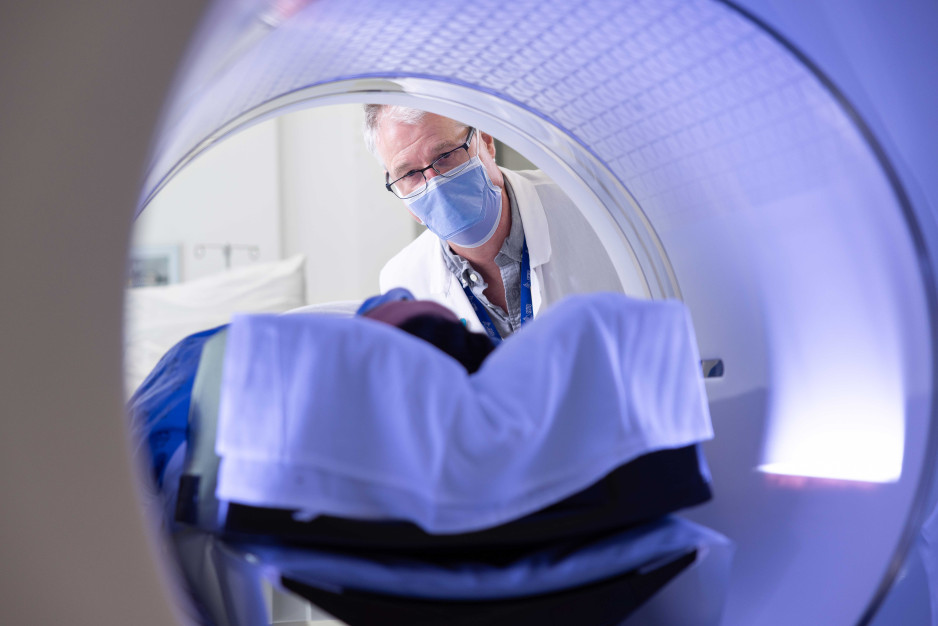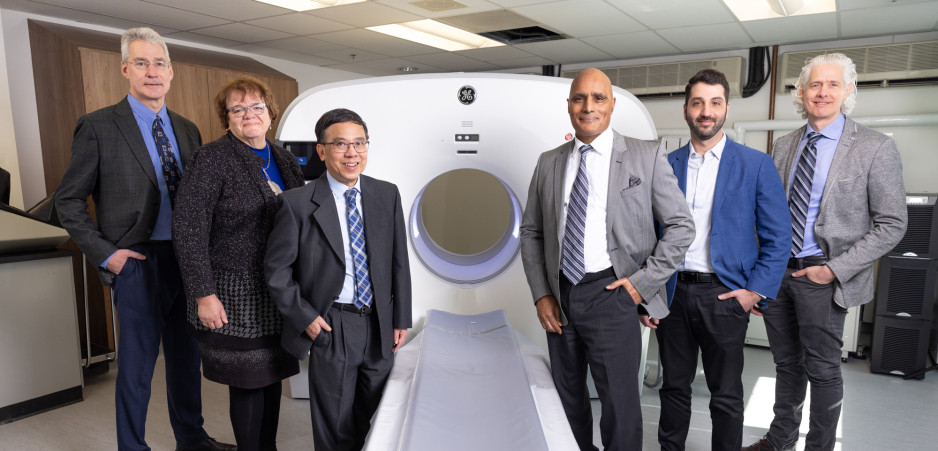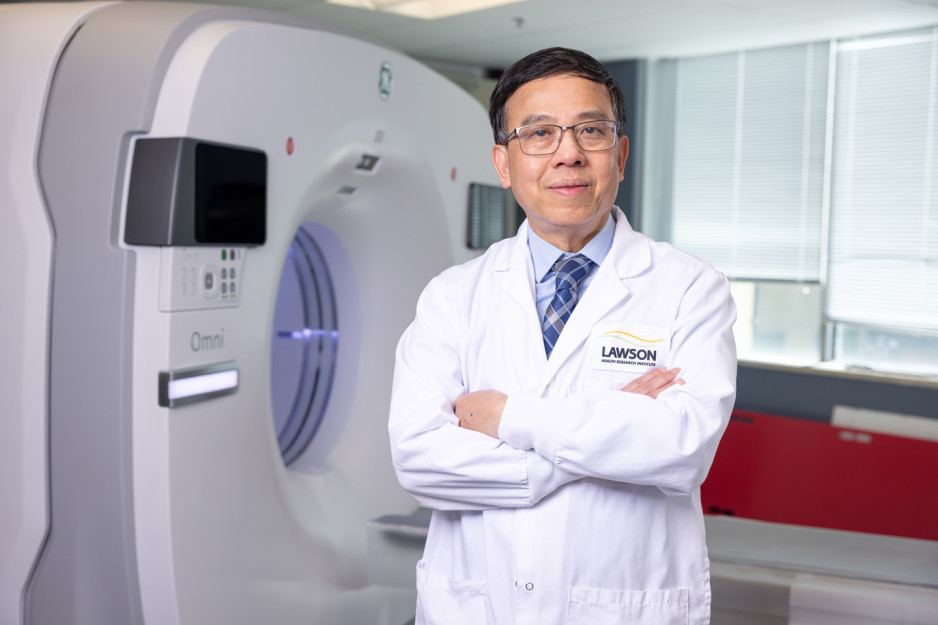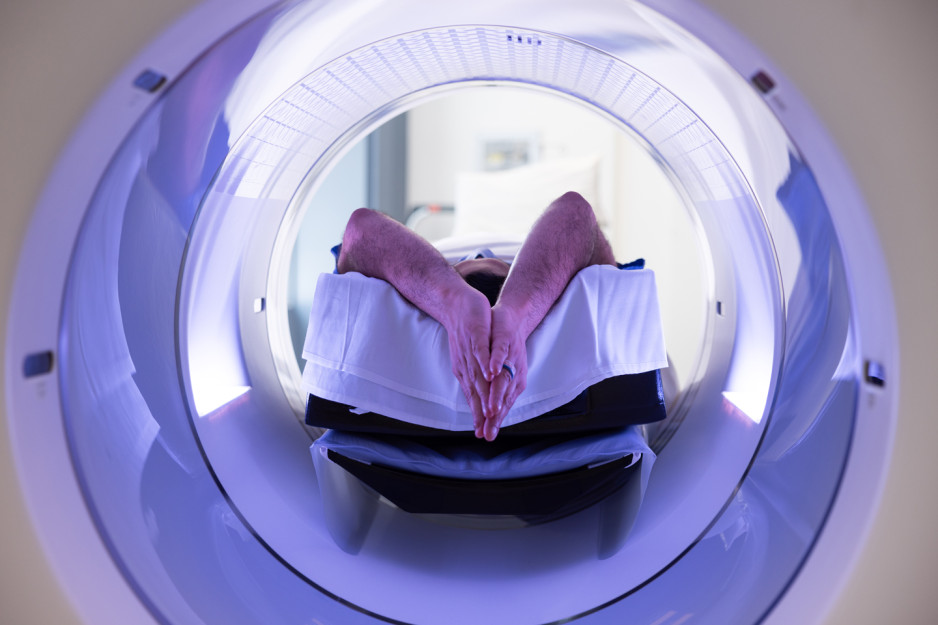Unlocking boundless potential
Ashmeet Gill had her first PET/CT scan shortly after being diagnosed with Hodgkin’s lymphoma, a cancer of the body’s germ-fighting immune system. She was nervous. Claustrophobia is an issue for the young Stratford resident and the scan, necessary to determine if the cancer had spread beyond the lymph nodes in her neck, would take 34 to 45 minutes, she was told.
Wrapped in a sheet and tucked inside the tube of the PET/CT at St. Joseph’s Health Care London (St. Joseph’s), Ashmeet, then 24, steeled herself to remain calm. But near the end of the scan, a sense of panic set in.
“It was not pleasant but I endured it. I made it through.”
Ashmeet’s next PET/CT scan would be six months later, after six cycles of chemotherapy, to determine if the treatment had worked. She was terrified of another panic episode. By then, however, St. Joseph’s had a brand-new PET/CT – Canada’s first, next generation, state-of-the-art Omni Legend PET/CT from GE HealthCare.
This time, Ashmeet’s scan took “barely 15 minutes or so,” she recalled.
“I thought, seriously? I couldn’t believe I was done. I was so happy.”
With the very first patients scanned with St. Joseph’s new PET/CT machine, it was obvious the breakthrough technology was living up to high expectations.
The machine is fast – decreasing the time it took for a scan from about 45 minutes on the older system to less than 14 – head to toe. Patients are exposed to less radiation, and the ability to precisely detect disease and tiny abnormalities is outstanding.
“This is what we have been waiting for,” says Ting-Yim Lee, a pioneer in the use of machines like PET/CT to gather new, vital information about diseases. “St. Joseph’s new Omni Legend by GE HealthCare is answering the call for patients, clinicians and researchers alike.”
PET/CT is the medical ace in imaging for the assessment and treatment monitoring of cancer, neurodegenerative disorders, and metabolic and cardiovascular diseases. At St. Joseph’s, the possibilities of this technology took a giant leap forward in August 2023, thanks in part to the generosity of donors and a $1 million contribution from St. Joseph’s Health Care Foundation. With the arrival of the new system, St. Joseph’s is set to become Canada’s first national GE HealthCare centre of excellence in molecular imaging and theranostics. This two-pronged approach to diagnosing and treating cancers and other diseases merges molecular imaging with the use of radiopharmaceuticals to identify the location and extent of diseased tissues and selectively destroy the abnormal cells.
“The speed at which we can now do exams means significantly improved comfort for patients while the exceptional image quality changes the game in the hunt for cancerous lesions,” explains Ting, Director of PET/CT Research at Lawson Health Research Institute (Lawson) and medical physicist at St. Joseph’s Hospital.
“For young adults undergoing repeat PET/CT exams due to their medical conditions, managing the radiation dose is critical,” explains Dr. Narinder Paul, Lawson scientist and Chief, Medical Imaging, at St. Joseph’s. “These individuals already face an elevated life-time risk of developing cancer from radiation, and this risk further increases with additional exposures.”
For older adults, the time it takes for the examination is also of great concern. Lying still for long periods can be a hardship due to pain from bone metastases or other conditions, and is a challenge for those who have dementia, are claustrophobic or experiencing other issues, adds Dr. Paul.
“Reducing the exam time is a huge improvement in the patient experience for these individuals.”
At age 75, Shirley Pryde was beyond grateful for the shorter scan time. The senior, who is being treated for cancer of the urinary tract system, had previously suffered a traumatic experience with an MRI scan, which also requires patients to lie still inside a tube. This left her very apprehensive about the PET/CT she recently needed to assess the extent of the cancer.
“I was very nervous but when I called to book the scan at St. Joseph’s, the procedure was described to me and I was put at ease,” says Shirley. “And once I got there, the technologist was wonderful. Amazingly, the total amount of time I was in the machine was only about 10 minutes. I was very relieved. I can go for the next scan without the worry.”
While patients hail the new PET/CT experience, clinicians and scientists are raving about the machine’s imaging prowess. The advanced AI-driven image formation technology now empowers the precise detection of cancer within lymph nodes and other anatomical structures, “achieving remarkable accuracy even for very small lesions,” says Dr. Paul.
The word ‘legend’ is in the name of the new PET/CT – the Omni Legend – and all indications are it will be legendary in what it can do – for patients today and in the future.
“The advantages we have seen so far are already impressive but what’s on the horizon in research and care – what we will be able to study and do – is even more exciting,” says Ting.
In particular, the new PET/CT is expected to be the catalyst for ground-breaking clinical research for patients facing breast cancer, Alzheimer’s disease, prostate cancer, epilepsy and obesity. Scientific exploration in those areas is currently being planned at St. Joseph’s that will pave the way for novel treatments, new, non-invasive ways to identify a patient’s risk of disease, the potential to clearly and painlessly view how treatment is working, and the ability to uncover the tiniest abnormalities at play when it comes to diseases and conditions.
Quite simply, St. Joseph’s is pioneering the path ahead. With the organization’s clinicians and scientists as maestros, the state-of-the-art PET/CT is creating a visual symphony that transcends the boundaries of conventional scans.
Peering into the future
St. Joseph’s Health Care London’s revolutionary new PET/CT machine is expected to expand clinical care by significantly enhancing research through the Imaging Research Group St. Joseph's, working together with researchers at London Health Sciences Centre, the London Regional Cancer Program, and Western University. The following are example areas of research that can be initiated in the future.
Breast cancer
Within the Breast Care Program at St. Joseph’s, research with the new PET/CT scanner may make breast cancer theranostics a clinical reality for the first time worldwide. This would involve combining PET/CT imaging with treatments for breast cancer enabling clinicians to identify the location and extent of diseased tissues AND selectively destroy the abnormal cells at the same time. Within the London research ecosystem, talented scientists are envisioning several directions that this new technology can take us, permitting better treatment for patients with several different types of breast cancer.
Alzheimer's disease
The new, highly sensitive PET/CT at St. Joseph's has the potential to empower innovative methods to identify individuals at risk of Alzheimer’s disease, those who might benefit from treatment, and early response to treatment. The high-powered machine can allow researchers to simultaneously study both blood flow and glucose metabolism in the brain. Both these mechanisms are believed to be contributing factors in the onset of Alzheimer’s. By measuring both at the same time, researchers hope to uncover early signs that the brain is in trouble and at risk of plaque deposits and toxic proteins that have been linked to the development of Alzheimer’s. This project would be conducted with St. Joseph’s Aging Brain and Memory Clinic at Parkwood Institute.
Epilepsy
In many patients with epilepsy, a clear cause cannot be identified on MRI scanning. In these patients, electrodes are often inserted into the brain to help detect abnormal electrical activity. When the MRI is normal, it can be difficult to decide where to place these electrodes. Research with the new PET/CT can explore a more efficient approach – the ability to precisely reveal the brain’s seizure epicentre using non-invasive imaging looking at characteristics in the epileptic brain that are present between seizures. This allows for more precise electrode placement and identification of the location of the seizures. Once the problem area is determined, surgeons intricately remove this part of the brain.
Obesity
In Canada, one in four adults have obesity, a problem that is causing a surge of health and health care challenges. GLP-1 receptor agonists are drugs growing rapidly in popularity that not only help improve blood sugars, reduce the risk of heart and kidney disease, but shed weight. However, weight loss attributed to these drugs may be linked to a reduction in lean muscle mass and the long-term effects of that muscle loss remain uncertain. Using PET/CT, researchers aim to explore potential alterations in muscle energy metabolism resulting from GLP-1 receptor agonists.



